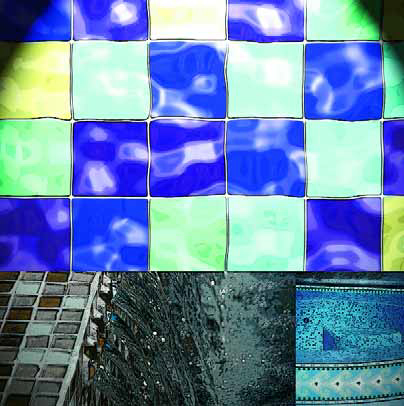material
For quality watershapes, there's nothing like a finish made up of mosaic glass tile: The material has a great look and a spectacular texture, comes in amazing colors and offers a full range of visual effects, from complete transparency to shimmering iridescence. It's the perfect crowning touch for an outstanding project if the budget is right - and that's where the trouble often starts. Through the years, I've inspected more than 40 projects in which
I know I've quoted or paraphrased Ernest Hemingway on this point before, but it bears repeating once again: Anything that was ever any good, you pay for. I'd go so far to say I've based my entire business philosophy on that basic idea. For one thing, there's an essential truth to what he's saying. For another, I see its clear application to watershaping on a variety of levels - particularly when it comes to the materials we use in creating our "art." Indeed, a huge part of giving clients the unique elegance and beauty they so often crave involves understanding and appreciating
The Getty Center is a true multi-media experience: imposing architecture, lots of people, incredible materials of construction, amazing views, diverse spaces, rich and varied sounds - and it's mostly all a bonus, because none of this has much to do with the Los Angeles center's core functions as museum and research institution. Designed by architect Richard Meier, the 750-acre campus is dominated by outsized structures wrapped in travertine, glass and enameled aluminum. It's all a bit cold (maybe time will soften the sharper edges and
Whether you choose to replicate old stone structures or borrow ideas and transplant them into contemporary designs, there is certainly a treasure trove of design concepts to be found in the masterworks of those who've gone before us. Indeed, stone has been the raw material of choice for many of the world's greatest architects, landscapers and watershapers, each of whom has relied on stone and its timelessness in fashioning works of beauty. In the first two articles in this series, we toured
For some time now, watershapers have exploited the fact that naturally occurring rocks and boulders can enhance the appearance of their work. Whether used in conjunction with artificial rock or alone, you appreciate the fact that rock comes in a never-ending variety of shapes, sizes and textures - and that they can be used to add both surprise and individuality to designs. For the most part, however, designers and builders have tended to work with common local stones - fieldstone, granite or river rock - that limit their palettes when it comes to color, visual appeal and expressiveness. It can indeed be an epiphany for those who've used common stones to come across material that includes complex mineral and crystalline structures or fascinating patterns of stratification that are the product of eons of metamorphic activity within the earth's crust. With this awareness comes the realization that the palette is virtually limitless and that rockwork can now easily be found to echo the colors and exceptional nuances found in


















